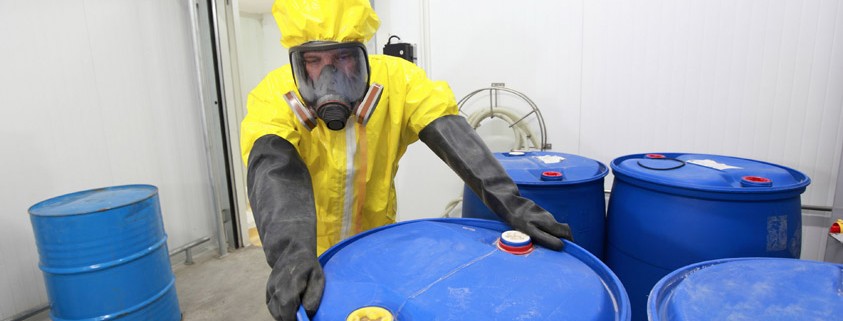What is Acute Toxicity Estimation (ATE) and how to calculate it correctly for your Safety Data Sheets (SDS)
In the world of chemical risk, understanding how dangerous a substance is after brief exposure can make the difference between preventing an accident or suffering its consequences.
Acute Toxicity Estimation (ATE) is a key tool to quantify this hazard, allowing chemical professionals to correctly classify substances and mixtures according to regulations such as the CLP Regulation.
This article clearly explains what ATE is, how it is calculated, and how it helps communicate hazards on labels and Safety Data Sheets (SDS). We will also see practical examples and how the EQGEST software automates its management.
What is Acute Toxicity Estimation (ATE)?
ATE represents the acute toxicity of a substance or mixture.
It is expressed in units comparable to traditional lethal doses or concentrations:
mg/kg body weight (oral or dermal)
mg/L or ppm for inhalation
Essentially, it is a standardized version of the LD₅₀ or LC₅₀, designed to facilitate hazard classification and communication.
For pure substances, the ATE usually matches the known LD₅₀ or LC₅₀. In the case of mixtures, a total ATE, called ATEmix, is calculated based on the values of the components and their concentrations.
Its main use is to determine the acute toxicity category of a substance or mixture, according to the criteria of the Globally Harmonized System (GHS) adopted by the CLP.
Each ATE range corresponds to a hazard category (from 1 to 4, with 1 being the most toxic) and a Hazard (H) statement that appears on chemical labels.
How is the ATE obtained?
There are different ways to obtain Acute Toxicity Estimation, depending on the information available:
1. Direct experimental data
The most reliable source comes from toxicological studies determining LD₅₀ or LC₅₀ through animal testing.
Example: a substance with an oral LD₅₀ of 150 mg/kg in rats will have this value as its oral ATE.
2. Predictive models (QSAR)
Another method is to use prediction models based on the chemical structure of the substance.
QSAR (Quantitative Structure–Activity Relationship) models estimate toxicity from molecular characteristics, without animal testing.
These models are accepted under the REACH regulation, provided they are validated and well-documented, and are particularly useful in the early stages of developing new products.
3. Calculation using the additivity formula for mixtures
For formulated products, the ATE of the mixture (known as ATEmix) is calculated from the ATEs of its components and their relative concentrations.
The following formula is used:
-13.18.55.png) For example, if a mixture contains 30% of a component with an ATE of 100 mg/kg and 20% of another with an ATE of 400 mg/kg, the calculation would be:
For example, if a mixture contains 30% of a component with an ATE of 100 mg/kg and 20% of another with an ATE of 400 mg/kg, the calculation would be:
-13.19.02.png) This result is compared with the classification ranges established by CLP to determine whether the mixture should be classified, for example, as “toxic” or “harmful” if ingested.
This result is compared with the classification ranges established by CLP to determine whether the mixture should be classified, for example, as “toxic” or “harmful” if ingested.
This approach allows objective quantification of the acute risk of a formulated product.
How should ATE be reflected in Safety Data Sheets (SDS)?
ATE must appear in the Safety Data Sheet, in compliance with Regulation (EU) 2020/878:
Section 3: include the ATE of components classified for acute toxicity, specifying the exposure route (e.g., “Oral ATE = 55 mg/kg”).
Section 11: show the total ATE of the mixture (ATEmix) when used for classification. It may also be added as technical justification for information purposes.
This is crucial since the SDS is the main tool for communicating chemical risks throughout the supply chain.
Automating the calculation with eQgest
The calculation of Acute Toxicity Estimation (ATE), especially for mixtures with multiple components, can be complex and requires regulatory accuracy.
eQgest software automates this process applying current regulations (CLP, REACH, and GHS), ensuring that Safety Data Sheets are always up to date, reducing risks, and saving time for technical teams.
Acute Toxicity Estimation (ATE) is an essential criterion in the classification of substances and mixtures, as it directly impacts chemical labeling and the end-user safety.
If your company needs to calculate ATE correctly, comply with the CLP Regulation, and generate Safety Data Sheets (SDS) efficiently, eQgest is the solution.
Contact us here and one of our experts will show you how to optimize your company’s regulatory management.
Receive regulatory updates straight to your inbox
Newsletter with updated chemical regulations, regulatory news from the sector, and upcoming webinars — carefully selected for professionals like you.



.png)
.png)